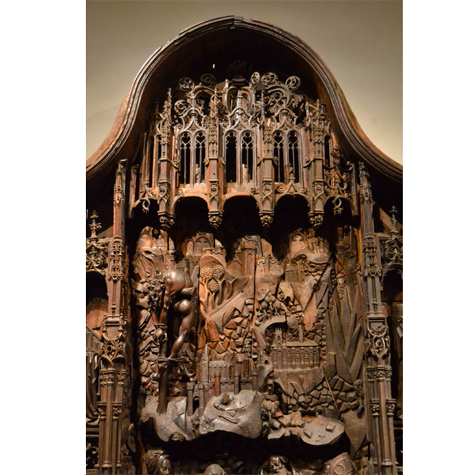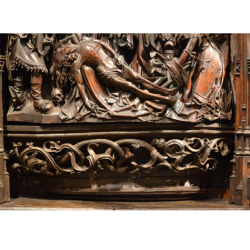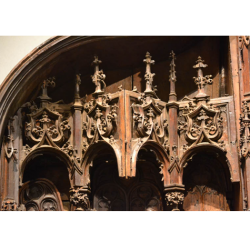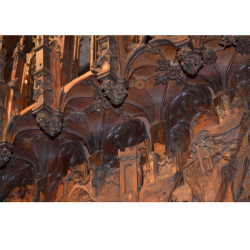Catalogue
THE LIFE OF THE VIRGIN ALTARPIECE
TYPOLOGY
The altarpiece presents a series of rather unusual details regarding Flemish-manufactured altarpieces, something that has resulted in many doubts about its origins. Neither can the design of the altarpiece be identified as belonging to traditional Hispanic altarpieces. It is a quite singular though not unique work due to the continuous curvilinear contour of the frame of the altarpiece topped off with a convex curve and the moulded corbels used to support the weight of the reliefs.
The altarpiece is made up of three main sections divided by tapering fasciculated pillars depicting only one compartmented scene on two levels. This compartment is the widest and is located in the central section. Two superimposed compartments stand one to each side. These are protected by poligonally-shaped canopies on the same level, in contrast to the centre canopy that has a receded second roof. The wings used to close the altarpiece are missing. However, we can see the hinges where they were originally attached.




